The 1990s Portal From top left, clockwise: The Hubble Space Telescope orbits the Earth after it was launched in 1990; American F-16s and F-15s fly over burning oil fields in Operation Desert Storm, also known as the 1991 Gulf War; the signing of the Oslo Accords on 13 September 1993; the World Wide Web gains a public face at the start of the decade and gains massive popularity worldwide; Boris Yeltsin greets crowds after the failed August Coup, which leads to the dissolution of the Soviet Union on 26 December 1991; Dolly the sheep is the first mammal to be cloned from an adult somatic cell; the funeral procession of Diana, Princess of Wales, who died in 1997 in a car crash in Paris, and was mourned by millions; hundreds of thousands of Tutsi people are killed in the Rwandan genocide of 1994, which would become a factor in initiating the Second Congo War of 1998. The 1990s (pronounced "nineteen-nineties"; shortened to "the '90s") was a decade of the Gregorian calendar that began on 1 January 1990, and ended on 31 December 1999. Culturally, the 1990s are characterized by the rise of multiculturalism and alternative media, which continues into the present day. Movements such as hip hop, the rave scene and grunge spread around the world to young people during that decade, aided by then-new technology such as cable television and the World Wide Web. In the absence of world communism, which collapsed in the first two years of the decade, the 1990s was politically defined by a movement towards the right-wing, including increase in support for far-right parties in Europe[1] as well as the advent of the Hindu nationalist Bharatiya Janata Party[2] and cuts in social spending in the United States,[3] Canada,[4] New Zealand,[5] and the UK.[6] The United States also saw a massive revival in the use of the death penalty in the 1990s, which reversed in the early 21st century.[7] During the 1990s the character of the European Union and Euro were formed and codified in treaties. A combination of factors, including the continued mass mobilization of capital markets through neo-liberalism, the thawing of the decades-long Cold War, the beginning of the widespread proliferation of new media such as the Internet from the middle of the decade onwards, increasing skepticism towards government, and the dissolution of the Soviet Union led to a realignment and reconsolidation of economic and political power across the world and within countries. The dot-com bubble of 1997–2000 brought wealth to some entrepreneurs before its crash between 2000 and 2001. The 1990s saw extreme advances in technology, with the World Wide Web, the first gene therapy trial, and the first designer babies[8] all emerging in 1990 and being improved and built upon throughout the decade. New ethnic conflicts emerged in Africa, the Balkans, and the Caucasus, the former two which led to the Rwandan and Bosnian genocides, respectively. Signs of any resolution of tensions between Israel and the Arab world remained elusive despite the progress of the Oslo Accords, though The Troubles in Northern Ireland came to a standstill in 1998 with the Good Friday Agreement after 30 years of violence.[9] Selected article -Grunge (sometimes referred to as the Seattle sound) is an alternative rock genre and subculture which emerged during the mid-1980s in the U.S. state of Washington, particularly in Seattle and nearby towns. Grunge fuses elements of punk rock and heavy metal. The genre featured the distorted electric guitar sound used in both genres, although some bands performed with more emphasis on one or the other. Like these genres, grunge typically uses electric guitar, bass guitar, drums and vocals. Grunge also incorporates influences from indie rock bands such as Sonic Youth. Lyrics are typically angst-filled and introspective, often addressing themes such as social alienation, self-doubt, abuse, neglect, betrayal, social and emotional isolation, addiction, psychological trauma and a desire for freedom. The early grunge movement revolved around Seattle's independent record label Sub Pop and the region's underground music scene. The owners of Sub Pop marketed the style shrewdly, encouraging the media to describe it as "grunge"; the style became known as a hybrid of punk and metal. By the early 1990s, its popularity had spread, with grunge bands appearing in California, then emerging in other parts of the United States and in Australia, building strong followings and signing major record deals. Grunge was commercially successful in the early-to-mid-1990s due to releases such as Nirvana's Nevermind, Pearl Jam's Ten, Soundgarden's Superunknown, Alice in Chains' Dirt, and Stone Temple Pilots' Core. The success of these bands boosted the popularity of alternative rock and made grunge the most popular form of rock music. (Full article...)Did you know (auto-generated) -
Selected pictureList articlesCategory puzzle Select [►] to view subcategories
1990s-related lists 1990-related lists 1991-related lists 1992-related lists 1993-related lists 1994-related lists 1995-related lists 1996-related lists 1997-related lists 1998-related lists 1999-related lists Lists of 1990s ballet premieres Lists of 1990s films 1990s politics-related lists 1990s record charts 1990s television-related lists Selected biography -Enrique "Ricky" Martín Morales (born December 24, 1971) is a Puerto Rican singer and songwriter. He is known for his musical versatility, with his discography incorporating a wide variety of many elements, such as Latin pop, dance, reggaeton, salsa, and other genres. Born in San Juan, Martin began appearing in television commercials at age nine and began his musical career at twelve, as a member of Puerto Rican boy band Menudo. He began his solo career in 1991 while in Sony Music Mexico, gaining recognition in Latin America with the release of his first two studio albums, Ricky Martin (1991) and Me Amaras (1993), both of which were focused on ballads. Martin's third album, A Medio Vivir (1995), helped him rise to prominence in European countries. The chart-topping single "María", incorporated a mixture of Latin music genres and became his first international hit. His international success was further solidified with his fourth album, Vuelve (1998). The album, which earned Martin his first Grammy Award, spawned songs "Vuelve" and "La Copa de la Vida". Martin performed the latter at the 41st Annual Grammy Awards. His first English album, Ricky Martin (1999) became his first US Billboard 200 number one. The lead single "Livin' la Vida Loca" topped both the Billboard Hot 100 and the UK Singles Chart. Martin's success in the late 1990s is generally seen as the beginning of the "Latin explosion". He has been credited for propelling the Latin pop music genre to mainstream recognition, paving the way for a large number of Latin artists to achieve global success. (Full article...)General images -The following are images from various 1990s-related articles on Wikipedia.
|
 |
You are invited to participate in WikiProject Years, a WikiProject dedicated to developing and improving articles about years, decades, centuries, and millennia. |
Associated Wikimedia
The following Wikimedia Foundation sister projects provide more on this subject:
-
 Commons
Commons
Free media repository -
 Wikibooks
Wikibooks
Free textbooks and manuals -
 Wikidata
Wikidata
Free knowledge base -
 Wikinews
Wikinews
Free-content news -
 Wikiquote
Wikiquote
Collection of quotations -
 Wikisource
Wikisource
Free-content library -
 Wikiversity
Wikiversity
Free learning tools -
 Wiktionary
Wiktionary
Dictionary and thesaurus
Sources
- ↑ Merkl, Peter; Leonard, Weinberg (2 August 2004). Right-wing Extremism in the Twenty-first Century. Routledge. ISBN 978-1-135-76421-0.
- ↑ "India – The Bharatiya Janata Party and the Rise of Hindu Nationalism".
- ↑ ROSEN, RUTH (27 December 1994). "Which of Us Isn't Taking 'Welfare'? : Poor children rank low in government largess; why is the comfortable class so mean?". Los Angeles Times.
- ↑ Séguin, Gilles. "Provincial Welfare Reforms in the 1990s – Canadian Social Research Links".
- ↑ Maloney, Tim (1 May 2002). "Welfare Reform and Unemployment in New Zealand". Economica. 69 (274): 273–293. doi:10.1111/1468-0335.00283.
- ↑ "Policy Exchange – Shaping the Policy Agenda" (PDF). Archived from the original (PDF) on 21 January 2014.
- ↑ https://www.usnews.com/news/articles/2013/12/19/report-us-executions-dipped-in-2013
- ↑ Handyside, AH; Kontogianni, EH; Hardy, K; Winston, RM (1990). "Pregnancies from biopsied human preimplantation embryos sexed by Y-specific DNA amplification". Nature. 344 (6268): 768–70. Bibcode:1990Natur.344..768H. doi:10.1038/344768a0. PMID 2330030.
- ↑ Stiglitz, Joseph E. (2004). The Roaring Nineties. W. W. Norton. ISBN 978-0-393-32618-5.
-
 List of all portalsList of all portals
List of all portalsList of all portals -
 The arts portal
The arts portal -
 Biography portal
Biography portal -
 Current events portal
Current events portal -
 Geography portal
Geography portal -
 History portal
History portal -
 Mathematics portal
Mathematics portal -
 Science portal
Science portal -
 Society portal
Society portal -
 Technology portal
Technology portal -
 Random portalRandom portal
Random portalRandom portal -
 WikiProject PortalsWikiProject Portals
WikiProject PortalsWikiProject Portals

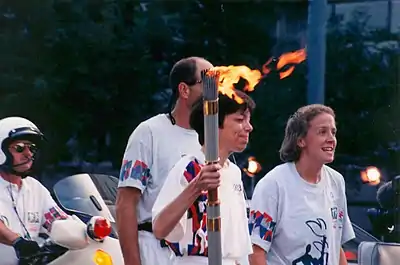














_(5).jpg.webp)




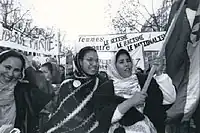









.jpg.webp)






.jpg.webp)



.jpg.webp)








.jpg.webp)






.jpg.webp)
.png.webp)


_(cropped).jpg.webp)


.JPG.webp)
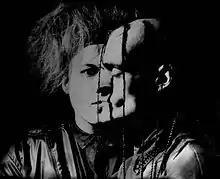







.jpg.webp)




_cropped.jpg.webp)

.jpg.webp)
.jpg.webp)
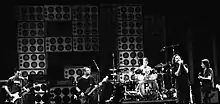
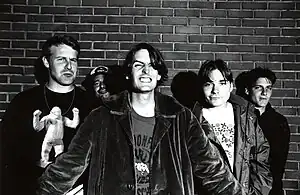





.JPG.webp)





















.jpg.webp)

%252C_woman's_costume%252C_1990s_-_Bunka_Gakuen_Costume_Museum_-_DSC05303.JPG.webp)















